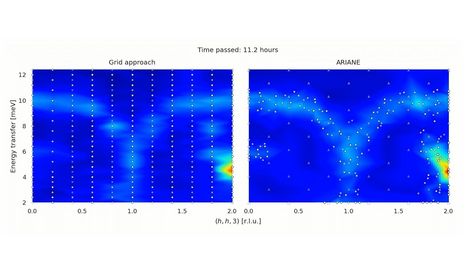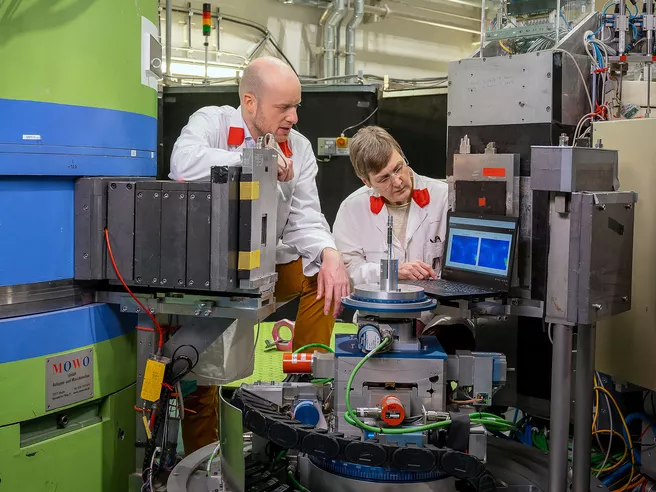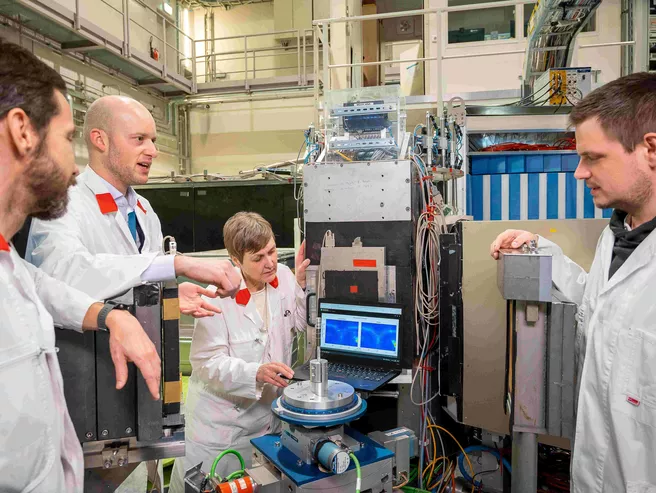Measurement time optimized
Neutrons provide unique insights into the structure and dynamics of matter. This requires large-scale research facilities, either research reactors such as FRM II or specific particle accelerators. For years, the number of available facilities in Europe has not covered the needs of research. Measurement time with neutrons is thus scarce and valuable. Methods for increasing efficiency can help to make better use of the available capacity and to reduce the gaps that arise. "The algorithm optimizes the use of the available measurement time, especially at the beginning of an experiment," says mathematician Mario Teixeira Parente.
The core of the active learning algorithm is a mathematical distribution, the Gaussian curve. It describes a statistical distribution of data in the form of a bell curve. The researchers use this to specifically find areas with informative signals. Other mathematical "tricks" allow them to identify areas with both strong and weak signals and distinguish them from noise signals.
Test passed in real experiment
The researchers demonstrated the advantages of their approach in real neutron experiments at PSI and Institut Laue-Langevin (ILL) in France, on previously measured as well as on numerous synthetic data sets. Using practical examples and realistic scenarios, they showed that the available measurement time is used more efficiently compared to certain previous methods. Thus, there is nothing stopping an application on further three-axes spectrometers.
Original text: Angela Wenzik, Jülich Centre for Neutron Science
Original publications:
Mario Teixeira Parente, Georg Brandl, Christian Franz, Uwe Stuhr, Marina Ganeva, Astrid Schneidewind
Active learning-assisted neutron spectroscopy with log-Gaussian processes.
Nat Commun 14, 2246 (2023).
doi: 10.1038/s41467-023-37418-8
Mario Teixeira Parente
Behind the Paper: Towards AI-assisted neutron spectroscopy
Physics, 20. April 2023.
More information:
In addition to scientists from Forschungszentrum Jülich, researchers from the Paul Scherrer Institute were also involved in the development of the algorithm and the measurements. This work was supported through the project Artificial Intelligence for Neutron and X-ray scattering (AINX) funded by the Helmholtz AI cooperation unit of the German Helmholtz Association.
Contact:
Dr. Mario Teixeira Parente
Forschungszentrum Jülich
Data Driven Discovery
Branch office at Heinz Maier-Leibnitz Zentrum
Phone: +49 (0)89 158860-657
E-Mail: m.teixeira.parente(at)fz-juelich.de


